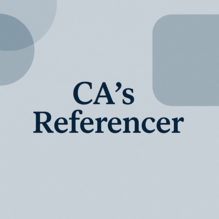India, UK sign FTA: What it means and how it will help both countries
New Delhi, Jul 24, 2025
India and the UK have signed a landmark Free Trade Agreement aiming to boost bilateral trade by nearly $34 billion annually, slash tariffs, and create thousands of jobs in both countries
India and the United Kingdom have signed a historic Free Trade Agreement (FTA) on Thursday during Prime Minister Narendra Modi’s visit to the UK. This trade deal is expected to boost annual bilateral trade by $34 billion.
UK Prime Minister Keir Starmer also announced fresh investment and export deals worth £6 billion between India and the UK. These agreements are expected to create over 2,200 new jobs in the UK.
What is an FTA?
A Free Trade Agreement is a deal between two or more countries where they agree to reduce or completely remove customs duties (or taxes) on most goods traded between them. Besides this, FTAs also aim to reduce other trade barriers and make it easier to do business, export services, and encourage investments between the partner countries.
The topics covered under these deals can range from 10 to as many as 30, depending on the agreement. Globally, more than 350 FTAs are currently active, and most countries have signed one or more such agreements.
Why are FTAs important?
Free Trade Agreements offer several benefits to countries, industries, and consumers:
-Bigger markets for exports: With zero or reduced customs duties, Indian exporters can send goods at cheaper prices to FTA partner countries.
-Equal opportunity: Indian companies get a level-playing field against competitors from other countries that may already have FTAs with these partners.
-Preferential treatment: Products from FTA countries get better access and treatment in each other’s markets compared to non-member nations.
-Boost to investment: These deals encourage foreign companies to invest in India, helping boost local manufacturing.
-Access to key materials: FTAs allow easy imports of raw materials and machinery at lower costs, which supports value-added manufacturing.
-Consumer benefits: In the long term, FTAs help lower prices and improve the quality of goods for consumers.
India’s FTA journey so far
Since 2014, India has signed five FTAs, including with Mauritius, the UAE, Australia, EFTA (European Free Trade Association), and now the UK.
Other countries and blocs India has FTAs with include Sri Lanka, Bhutan, Thailand, Singapore, Malaysia, South Korea, Japan, Asean (10-nation bloc), Australia, the UAE, Mauritius, and EFTA (Iceland, Liechtenstein, Norway, Switzerland).
India's ongoing trade talks
India is also negotiating trade deals with several countries and regions, including the United States, the European Union, Oman, Peru, and Israel. Negotiations with Canada, however, are currently on hold due to political concerns.
These agreements aim to increase market access, reduce trade barriers, strengthen strategic ties, and support Indian industries with balanced terms.
India-UK FTA: What’s in it?
The India-UK Comprehensive Economic and Trade Agreement (CETA) will eliminate or reduce taxes on key products and is expected to double bilateral trade from about $56 billion to much more by 2030.
Key highlights of the India-UK FTA include:
-Labour-intensive goods: India will be able to export items like leather, footwear, and clothing to the UK without high duties.
-Cheaper UK imports: British whisky and cars will become cheaper for Indian consumers.
-Whisky duty cut: India will reduce the import tax on Scotch whisky and gin from 150 per cent to 75 per cent immediately, and eventually down to 40 per cent in ten years.
-Car import duties: Tariffs on UK-made cars will come down from over 100 per cent to 10 per cent under specific quotas for both countries.
(With PTI inputs)
[The Business Standard]


